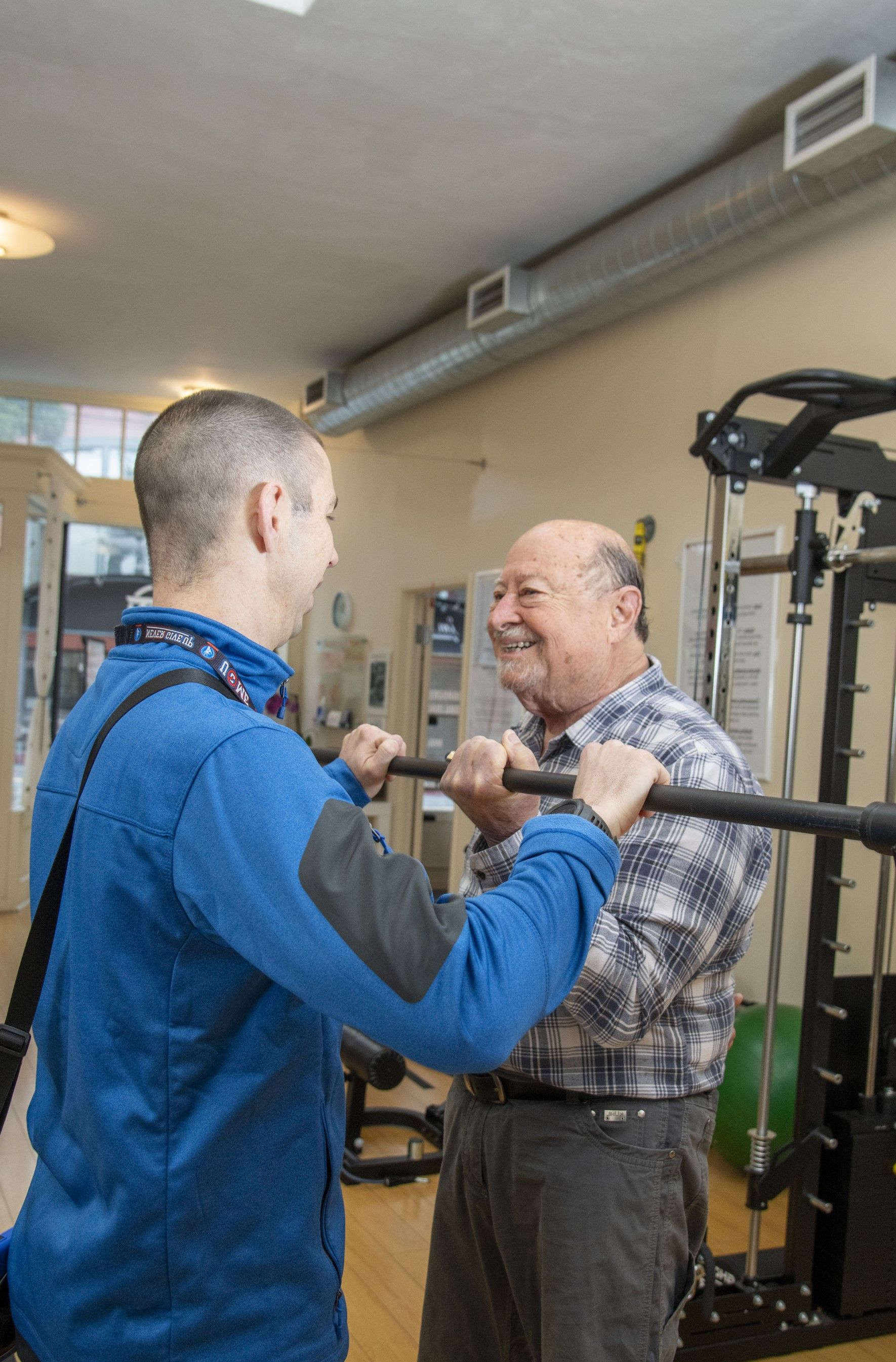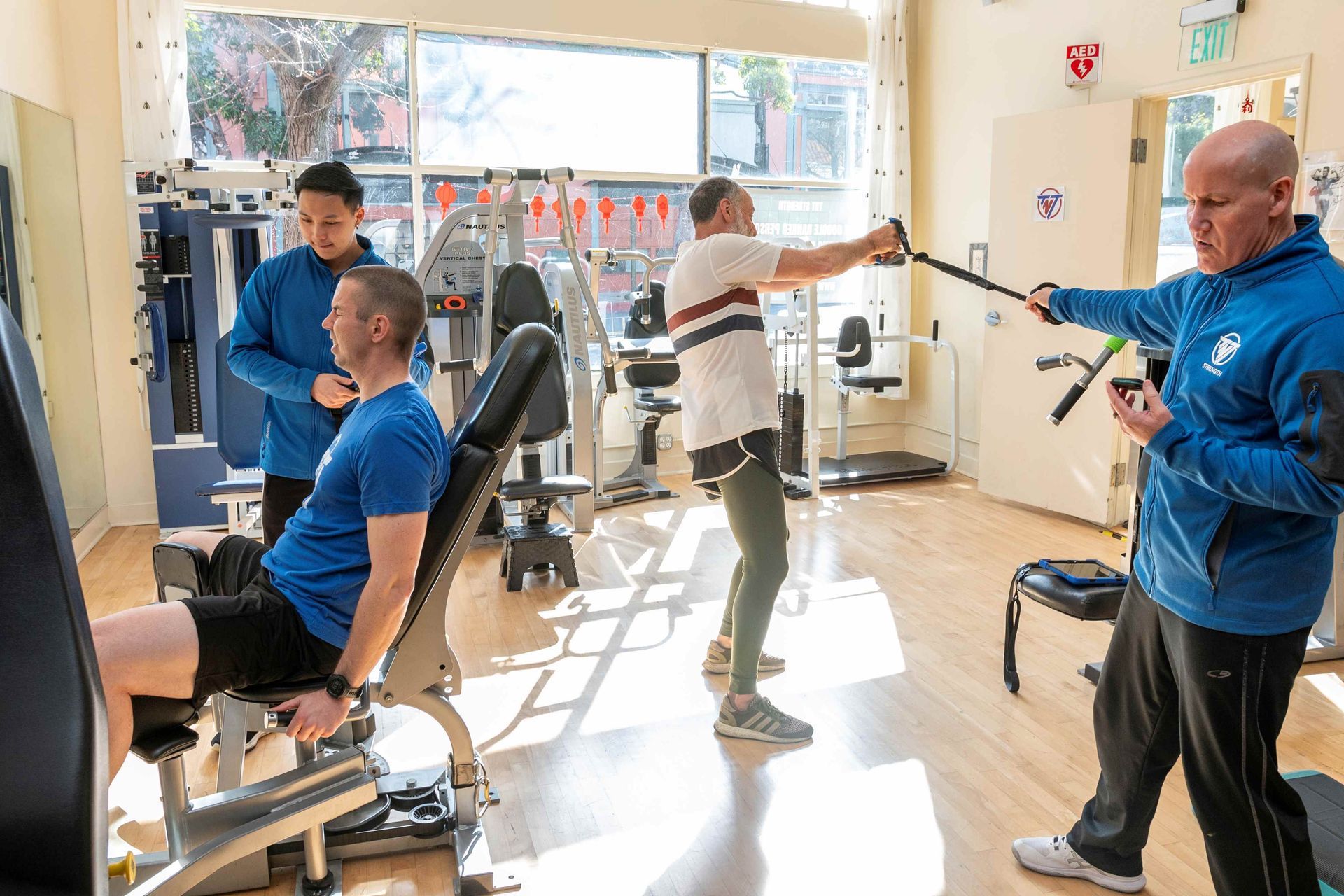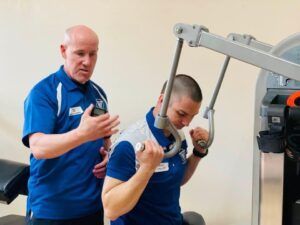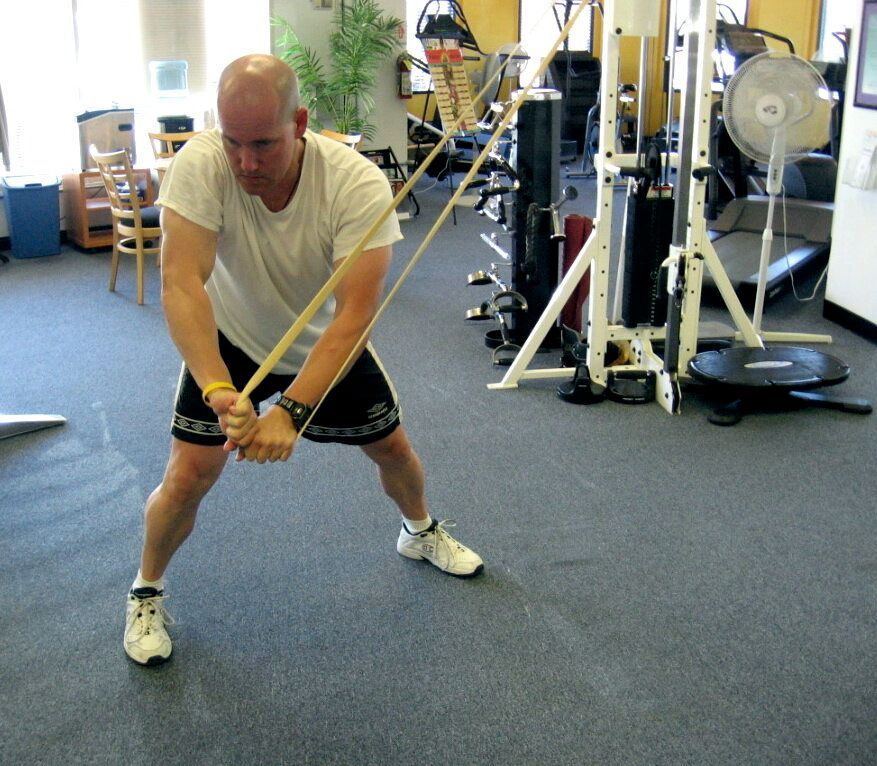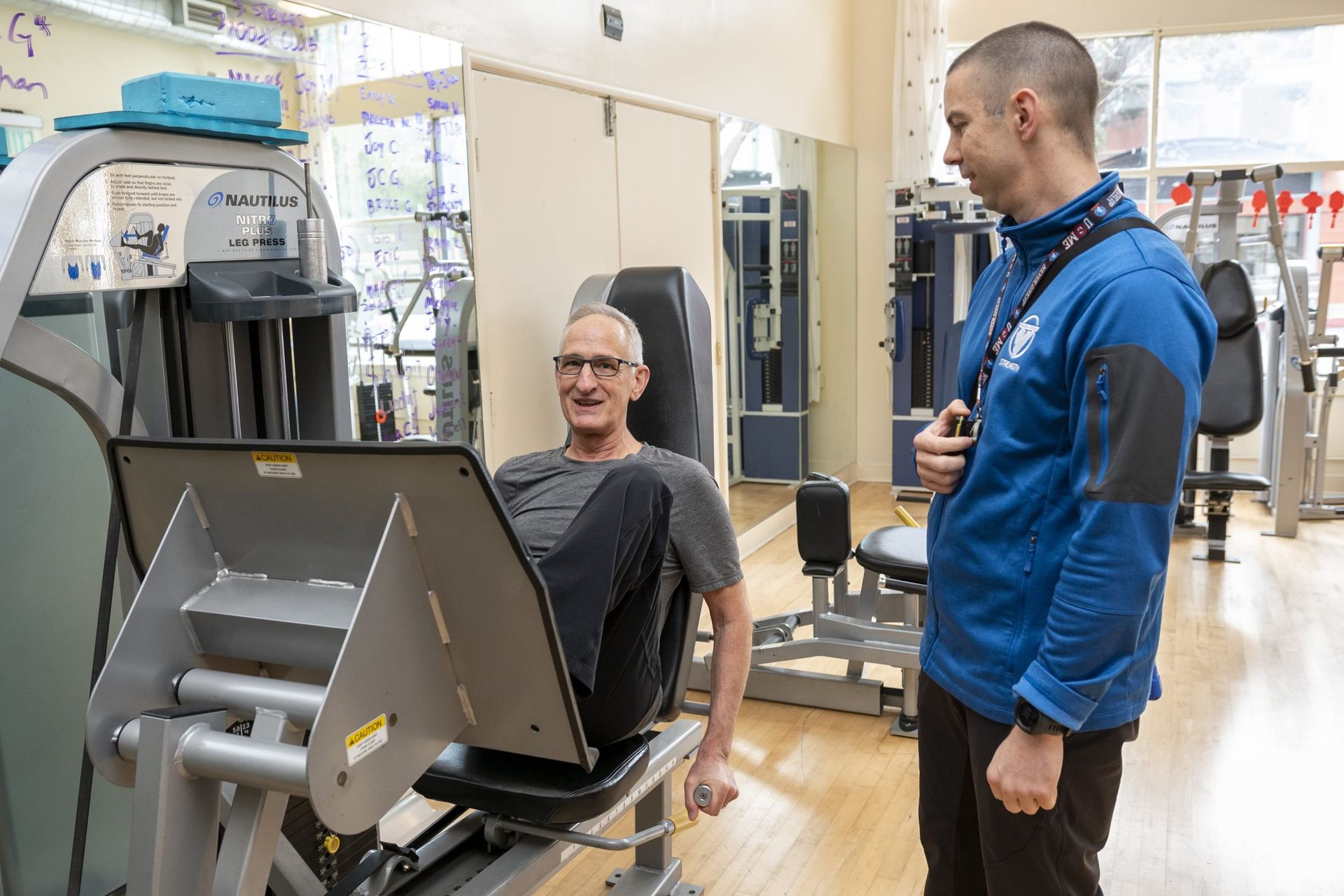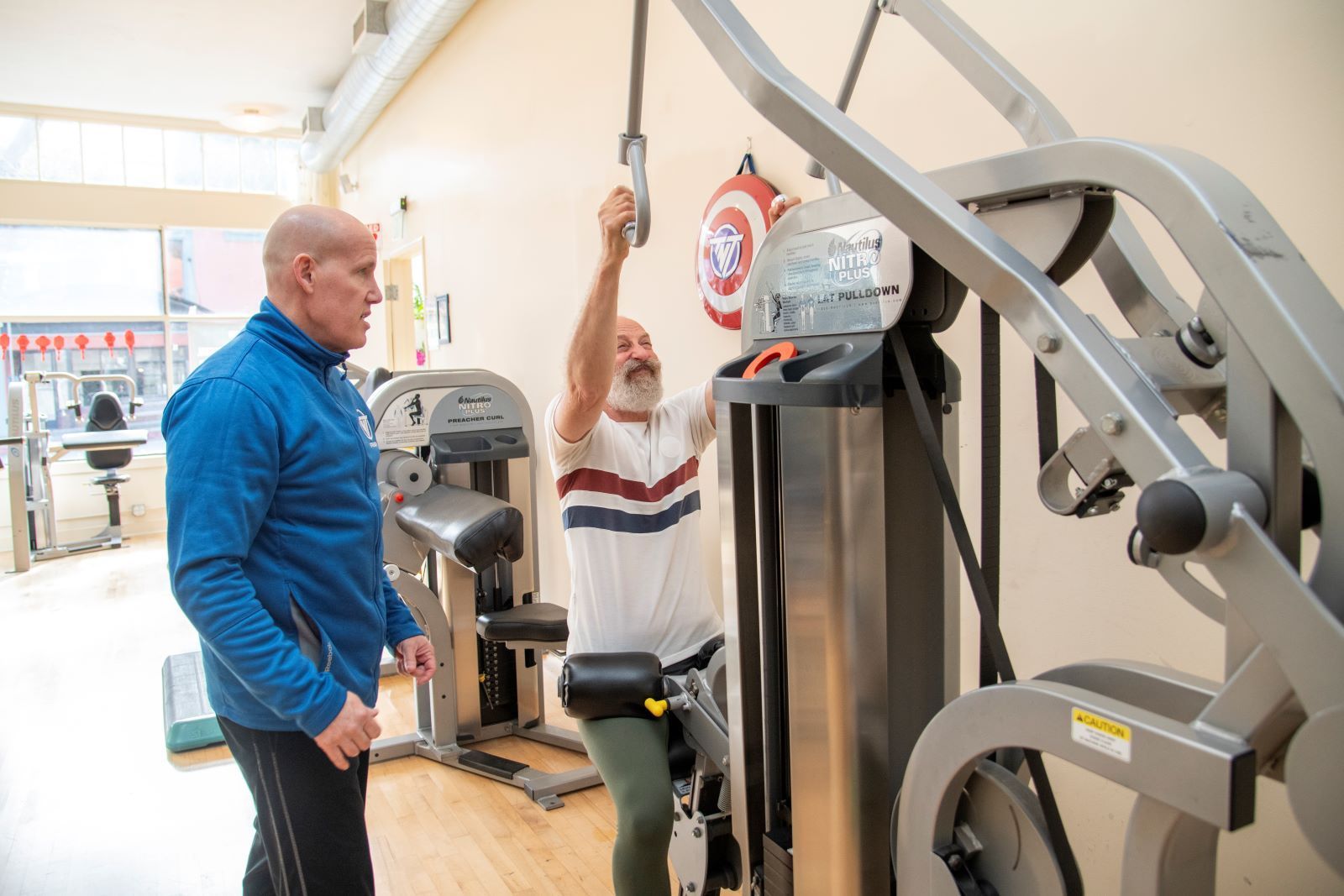Strength Training for Athletes
Primary Goals of the T.N.T. Athletic Strength & Conditioning Program:
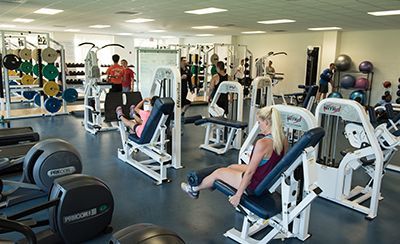
By TAKU
1. Reduce the likelihood and severity of injury – Keeping athletes healthy and on the field of play is imperative to the success of a team. Thus, the primary goal of all strength and conditioning programs should be injury prevention. This goal includes both reducing the likelihood and severity of injury occurring during athletic performance and also eliminating injuries occurring in the weight room. A strength training program must emphasize areas that are prone to injury as a result of competing in any number of athletic endeavors. Performing potentially dangerous exercises in the weight room to prepare for potentially dangerous activities in competition is like banging your head against a wall to prepare for a concussion.
2. Stimulate positive physiological adaptations – Physiological changes resulting from a proper strength training regimen include an improvement in strength and the ability to produce force, improved power / explosive capacity, achievement and maintenance of a functional range of motion, and an improvement in body composition.
3. Improve confidence and mental toughness – An extremely valuable byproduct of strength training may be improved confidence and mental toughness. Intense workouts will expand an athlete’s tolerance for physical discomfort. Most athletes who pride themselves in proper strength training will compete harder because they have invested time and energy to physically prepare for competition.
Our program has been prepared to meet the following objectives:
-
Increase and maintain functional range of motion
-
Increase and maintain total body strength levels for improved performance and reduced likelihood of serious injury
-
Increase functional muscular mass – which will enhance your ability for greater power output
-
Keep your percentage of body fat at an acceptable and efficient level
-
Improve muscular endurance
-
Improve your cardiovascular / cardiopulmonary efficiency
-
Improve your quickness and speed
-
Potentially make you mentally and physically tougher
-
Prepare you to win
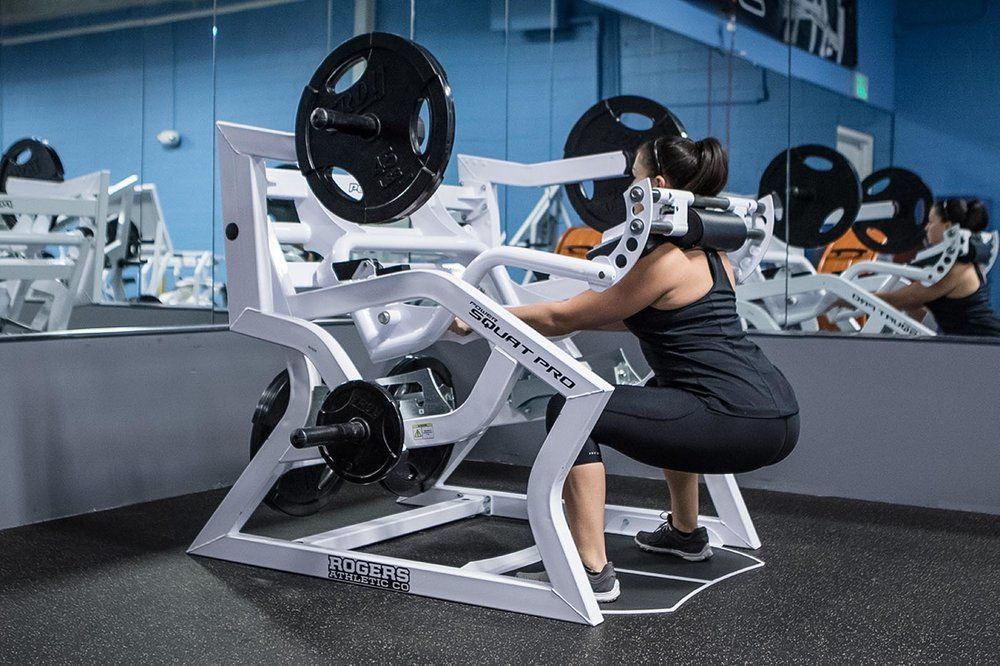
Muscular Strength / Power
Function Dictates Prescription:
The function of a particular muscle structure dictates what exercise will be performed to target that muscle structure. This means that we must first think about the role or purpose of a given muscle before we can decide what exercise we will use to train it.
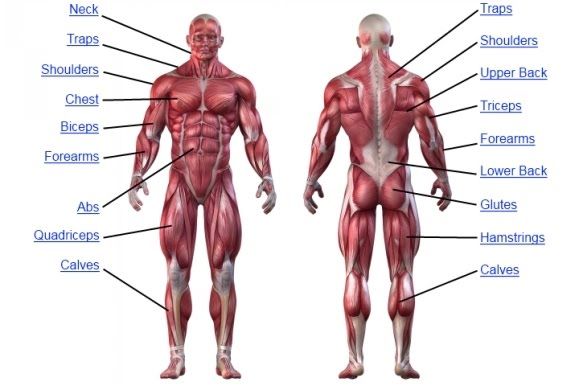
Muscle Groups
It is important to understand the major muscle groups of the body, what they do, and how we can train them. We will break the body up it to the following groups:
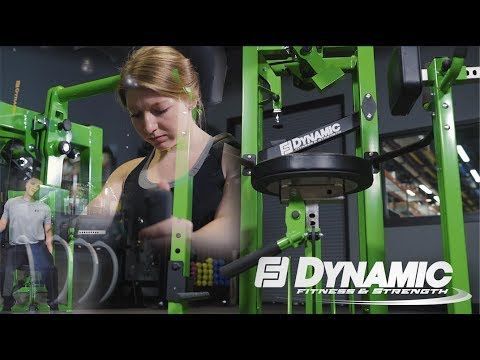
Neck.
Shoulders.
Chest.
Back.
Arms.
Legs.
Midsection.
The exercises performed can be grouped into the following:
Multijoint Lower body – ex. Squat, Dead-lift, Leg Press
a. push – ex. Bench Press, OH Press, Dips
b. pull – ex. Rows, Chin-ups, Recline pulls
Single joint – ex. Arm Curls & Extensions, etc
Progressive Overload
The physiological basis for any resistance training program is the overload principle. The overload principle states that a system must be stressed beyond its current capacity in order to stimulate a physiological response… that response is an increase in muscular strength and size. The goal should be to use more resistance or perform more repetitions each time you strength train. The overload principle is the single most important part of a resistance training program. Without overload, a resistance training program is of little or no value. Our goal is to safely and efficiently facilitate overload.
Intensity
Intensity of exercise is the most controllable factor in any resistance training program. Despite what the majority of the population believes, magical set rep schemes, barbells and one repetition maxes have little or nothing to do with obtaining results. Training with a high level of intensity is what stimulates results. A trainee cannot control how he / she will respond to a resistance training program; that response is controlled by genetics. There is no evidence to suggest that low reps with high weight will produce muscular size and strength and high reps with low weight will produce toned muscles. This is a common assumption with no scientific backing.
Brief and Infrequent
Because high intensity exercise is so demanding on the physiological systems of the body, only small amounts can be tolerated. Only a limited amount of exercises can be performed in a workout and only a limited amount of workouts should be performed per week. An excess of volume will cause over training and will lead to little or no results. Because of these facts, our training sessions last only 15-45 minutes and are performed only one, two or three times per week*.
*Volume prescriptions are based on the individual athlete, sport and in-season / off-season demands pf athletic training.
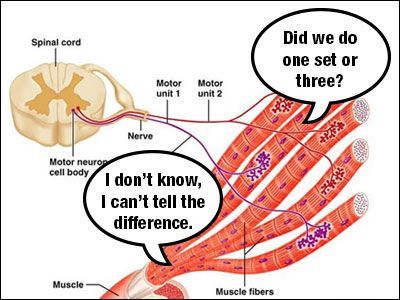
How Many Sets?
In the past we assumed that the number of sets you performed determined whether or not you produced the best results. Through experience we’ve learned it’s not how many sets you perform. The key is how you perform each set. You can gain strength completing one set or ten sets. It’s also possible to gain no strength regardless of how many sets you perform. Do to our hectic lives, and over-loaded work schedules, most non-professional athletes barely have enough energy to recover from the stress of the daily grind, let alone have time to squeeze in a workout. Your goal as a Strength coach must be to have your athletes perform as few sets as possible while stimulating maximum gains. It must be a priority to eliminate non-productive exercise. Once you have warmed up, why perform a set that is not designed to increase or maintain your current level of strength?
Repetition Performance
The prescribed protocol will often dictate how the repetitions for a set are to be performed. However, there are some performance techniques that are common to all repetitions regardless of the protocol. Always change directions from concentric to eccentric in a smooth fashion allowing the muscles to do the work, not momentum. Never jerk or throw a weight. When a weight is jerked or thrown, momentum is incorporated to move the resistance. When momentum is used the load is taken off of the muscles and less muscle fibers are recruited thus limiting the degree of overload.
Never twist or torque body when performing a rep. The athlete should be instructed to maintain proper positioning, posture, and form. If a protocol does not dictate a specific rep speed, rep speed should be as follows. Raise weight under control taking approximately 3-5 seconds; pause in the contracted position; lower weight at the same speed as the raising of the weight. If in doubt, move slower, never faster. Never sacrifice form for more reps or more resistance. It is not the amount of weight or the number of repetitions performed that matters; it is how the repetitions are performed that matters.
Explosive Training
None of the workouts we will be using contain traditional “explosive” exercises. It is important to understand why we do not implement these exercises. A traditional explosive lift, such as the power clean, does little if anything to build strength, does nothing to develop speed or explosiveness, and is extremely dangerous. Explosive lifts incorporate momentum… when momentum is used to throw a weight, the load is taken off the skeletal muscle, thus, reducing fiber recruitment. In order to develop speed and explosiveness, an individual must train in a slow manner that allows the muscles to raise and lower the resistance… thus leading to fatigue of the targeted muscular structure and leading to the recruitment of more fast twitch muscle fibers.
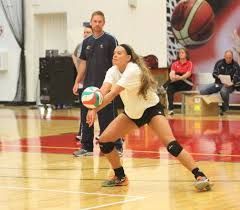
Specificity
Skills are specific. They do not transfer. Do not attempt to mimic a skill performed on the field in the weight room. Throwing a weighted baseball is a far different skill then throwing a conventional baseball. As soon as you add resistance to a skill it becomes a new skill. A different neuromuscular pattern is recruited. In his text, Introduction to Motor Behavior: A Neuropsychological Approach, author George Sage states, “Practice of nonspecific coordination or quickening tasks will not transfer to sport specific skills.”
Example of a Strength Training Program
All workouts include both warm-up and cool-down activities as well as neck, grip and mid-section work.
BASIC FULL-BODY PROGRAM:
-
Leg Press or Squat 15-20
-
Leg Extensions or lunge 8-12
-
Leg Curls or “triple threat” 8-12 (leg curl may be Prone, Seated or Standing)
-
Calf Raise 8-12 Barbell, Dumbbell, Machine, (Seated or standing)
-
Chest press 8-12 Dumbbell, machine, or straight bar.
-
Push-up
-
Back Row 8-12 Dumbbell, machine, or straight bar.
-
Shoulder Press 8-12 Dumbbell, machine, or straight bar.
-
Chin-ups / Reverse Grip Pull downs 8-12
-
Dead Lift 12-15 Dumbbell, machine, Trap Bar, or straight bar.
-
Dips / Triceps Extensions 8-12 Dumbbell, machine, or straight bar.
-
Bicep Curls 6-10 Dumbbell, machine, or straight bar.
That’s it. Brief Intense, Infrequent. Remember your goal as a strength coach is to prepare your athletes as best you can while doing no harm. Keep it simple. Keep it safe.
TAKU’s NOTE: For more on safe efficient, and effective training programs for athletes check out this weeks podcast episode featuring Michael Bradley Head S&C Coach for FSU Basketball
Experience the TNT Strength difference with a free workout.
START YOUR FITNESS TRANSFORMATION WITH A
FREE WORKOUT
Complete the form and we'll set up an appointment for you.
Recent Articles

